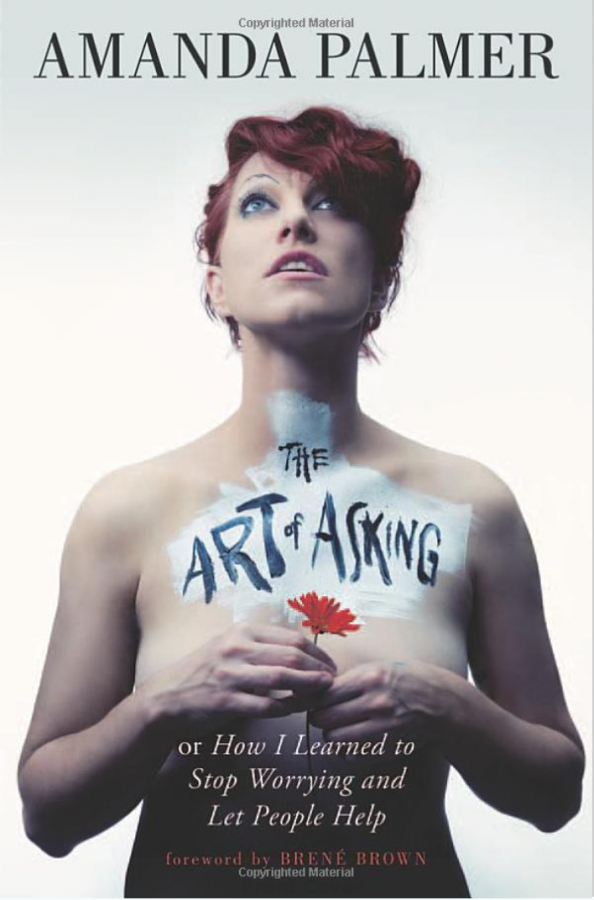Amanda Palmer’s memoir “The Art of Asking” is nothing short of exceptional.
Book Review
Palmer tells the rest of the story through a transparent lens. As she writes, her language is indicative of not just honesty, but an analytical view of the world.
`When creating a memoir, there is often an unspoken agreement between the reader and author that the contents will not be too vulgar. It is assumed that the author will use proper language and etiquette, they will mind their manners, and they absolutely shall not say anything considered to be improper. It is agreed that the images contained within the book will also fall within this standard, for it is considered outlandish to publish something so crude as a woman’s body in something as serious as an autobiography.
In life and writing, Amanda Palmer defies this standard.
Wife of Neil Gaiman, and previously one half of the Dresden Dolls, a punk band, Palmer has lived her life refusing to abide by the societal expectations of others.
She begins: “‘WHO’S GOT A TAMPON? I JUST GOT MY PERIOD.’” This singular phrase sets the tone for the remainder of the memoir. Palmer uses her novel in the same manner as she performs. She is loud, uncensored, and brutally honest. In this tone, she tells her story. It is a story of losses and wins, of laughter and tears. By the end of the memoir, the reader feels a new profound connection to the world, with their eyes open to a different point of view.
Shortly after the paragraphs about the tampon and the metaphor it encompasses, Palmer tells the story of her first job as a performer. When she was in her early twenties, she decided to make her own job performing as a character of her own creation called “the eight-foot bride”. She would paint herself head to toe in white paint, put on a large wedding dress and veil, and stand atop a crate in the middle of a public park for hours. She placed a hat by her feet, and in her hands, she held a bouquet, just as every bride is pictured to do. There she would stand for hours, simply watching the passers-by, and waiting for someone to drop a coin into her hat. The moment they did so, she would bend down, look them in the eyes, and hand them a flower.
The exchange was silent, but there was still a silent communication at the moment.
“My eyes would say: Thank you, I see you. And their eyes would say: Nobody ever sees me. Thank you.” (Palmer 31).
Palmer tells the rest of the story through a transparent lens. As she writes, her language is indicative of not just honesty, but an analytical view of the world. When Palmer recalls a story on the pages, there is a distinct purpose and moral to the story. Through each one, the reader learns something new about Palmer, about the world, about society, or themselves.
Amanda Palmer, now 44, was 35 when this book was published, but this book was based on a similar TED talk she gave a few years prior. The book itself is a combination of the TED talk, various other stories, and her own original music. In between the chapters, Palmer placed photos of performances and lyrics from her own songs that convey the message from the chapter before or after. These lyrics not only allow for insight and interpretation of the author’s message, but they add dimension to the story as well.
As the reader moves through the story, they realize that it includes far more tragedy than it does comedy. Palmer experiences unimaginable emotional and physical pain throughout the story, but the way she writes of her experiences is remarkable. When she recounts her tales onto paper, she does so through eyes that see beauty where there may be none. She writes of the poetry in an ugly moment, of the morals to be learned from deeply saddening times.
The most striking thing about Palmer’s writing is not her way of twisting a negative, rather it is her raw, emotional honesty. Unlike other memoirs, where the author tells a story to teach a lesson and make themselves look good, “The Art of Asking” was written for those who need to feel less alone in their experiences. The losses depicted in the book are heart-wrenching to those who have never felt that same type, but to those who have, it’s familiar. Palmer writes of her own fears of marrying Gaiman, of her anxiety when she became pregnant with her firstborn, and of her emptiness when her best friend and mentor died. The words that she uses feel almost unfiltered as if she is speaking directly to the reader themselves about what she has experienced.
Amanda Palmer’s memoir, “The Art of Asking” is nothing short of exceptional. She uses her own experiences to relate to the reader, and she uses her lyrics to inspire and guide them. After reading this book, a feeling of understanding washes over the reader. When she writes, Palmer is telling the reader that they are seen and that they are understood. She is handing them a flower with the sole purpose of developing a connection, and by the end of the book, the connection is incredibly strong.



